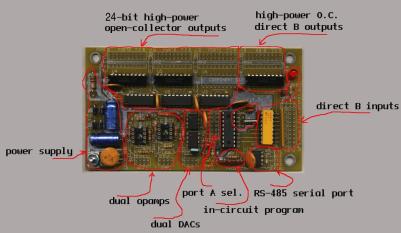Design Notes – Analog Basics – 06

Building discrete semiconductor and passive designs, using Opamps and Mixed Design Circuits are the first step in electronics. Most consumer Electronics have a high analog circuit content. Even in Embedded Systems the interface design that matters for real time systems is an analog circuit. Here are some more analog points in my old notes.
The Art And Science Of Analog Circuit Design
The above book is educative, have a look but not related to my design notes. My notes below are older than the internet. 80s to early 90s. My experience as a R&D Engineer.

- The Contact resistance of connectors, thermocouple effects in connectors and solder joints and thermal gradients over the PCB can cause errors when you measure in high resolution.
- High impedance points of circuit like 500 kilo ohm and above can pick up AC noise and DC leakage currents. this will affect the performance of circuit, so for DC you have to put a ‘gaurd ring’ of the signal ground around that point in PCB. For RF you have to shield with things related to iron and mu metal, for low signals even a copper shield will do.
- Unused high impedance inputs of opamps or gates or any IC should be pulled-up or down.
- High Impedance inputs which have to float can be made noise immune with a small cap to ground. Like a 102 CD.
- If an opamp circuit with feedback oscillates, then a cap at the right place can stop it, it will dampen the oscillations, just like eddy current dampening in moving coil meters. One way is a cap across the feedback resistor another way a cap between inv- and non-inv+ inputs. A closed loop system may oscillate at border points. The value of cap depends on how fast (response time) the system has to be and the type of oscillations seen.
- Inputs and Outputs are the points of electric abuse, opto isolate, use zener barriers with overrated devices.
- If one layer of PCB is a ground plane and second layer has wide tracks they may form a capacitance (say 1pF) with the PCB glass epoxy as dielectric, more so in multilayer PCB as dielectric is thinner.
- In a 3-1/2 digit meter circuit you may need 0.1% Resistors 10ppm or less, so in a 4-1/2 meter we need 0.01% Resistors 1ppm or less or temperature compensation circuits and trimpots.
- Tolerance of resistors in a precision circuit and thermal drift of both opamps and resistors; can show movements in high resolution measurements. So the whole circuit may have to be built into a sealed 40 deg C Instrumentation Oven sealed in glass wool. This will work both in cold and hot climates.
- Humidity, chemical fumes, dust and grime should not reach the analog circuit areas. Depending on application, a coating may have to be given or the entire unit hermetically sealed.
- Use MFR (metal film resistor) 1% in all analog designs and if possible use only MFR for better reliability.
- Glass epoxy PCB have high insulation resistance, above 10 tera ohms, and are not hygroscopic which means they do not drink water vapor, this makes them very suitable for precision instrumentation and sensitive circuits.






